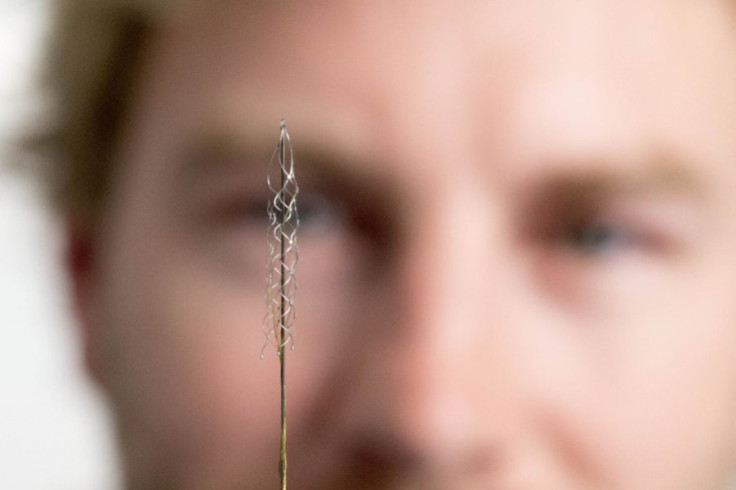Brain implant lets paralysed patients control wheelchairs and bionic limbs with their thoughts

Scientists have created a device which fits inside a blood vessel in the brain and gives paralysed patients the ability to control an exoskeleton or bionic limbs with their thoughts. The breakthrough invention will undergo its first human trials in 2017.
Described as providing a "brain machine interface", the device consists of a stent-based electrode (stentrode), which is implanted into a blood vessel in the brain and records neural activity. The size of a paperclip, the implant can record high-quality signals emitted from the brain's motor cortex, reports Science Daily, without the need for open brain surgery.
Tests have already shown how the device can be used to control bionic limbs, and doctors say they are confident it could even let patients control an electric wheelchair with their thoughts. A small group of patients with spinal cord injuries will be the first to try out the stentrode during trials at the Royal Melbourne Hospital, Australia in 2017.
A low-risk procedure
Dr Thomas Oxley, a neurologist at the hospital, described the devices as revolutionary, adding: "We have been able to create the world's only minimally invasive device that is implanted into a blood vessel in the brain via a simple dry procedure, avoiding the need for high risk brain surgery."
The doctor added: "Our vision, through this device, is to return function and mobility to patients with complete paralysis by recording brain activity and converting the acquired signals into electrical commands, which in turn would lead to movement of the limbs through a mobility assist device like an exoskeleton. In essence this is a bionic spinal cord."
Exoskeletons are currently controlled by the patient manually manipulating a joystick to make themselves stand and walk. This stentrode will be the first device to allow direct communication between the brain and the patient's bionic limbs, without the need for other controls.
There is huge demand for giving movement back to patients with stroke and spinal cord injuries. Research conducted in Australia, where the device will be trialled, found there are 20,000 Australians with spinal cord injuries, and that the typical patient is a 19-year-old male.
"An amazing development"
Explaining how the device is similar to a pacemaker, Dr Nicholas Opie said: "Utilising stent technology, our electrode array self-expands to stick to the inside wall of a vein, enabling us to record local brain activity. By extracting the recorded neural signals, we can use these as commands to control wheelchairs, exoskeletons, prosthetic limbs or computers. In our first-in-human trial...we are hoping to achieve direct brain control of an exoskeleton for three people with paralysis."
Looking further ahead, the scientists believe the device could be used to help people with epilepsy, Parkinson's and other neurological disorders. Professor Terry O'Brien, head of medicine at the Royal Melbourne Hospital, said: "To be able to create a device that can record brain wave activity over long periods of time, without damaging the brain, is an amazing development in modern medicine."
© Copyright IBTimes 2025. All rights reserved.






















